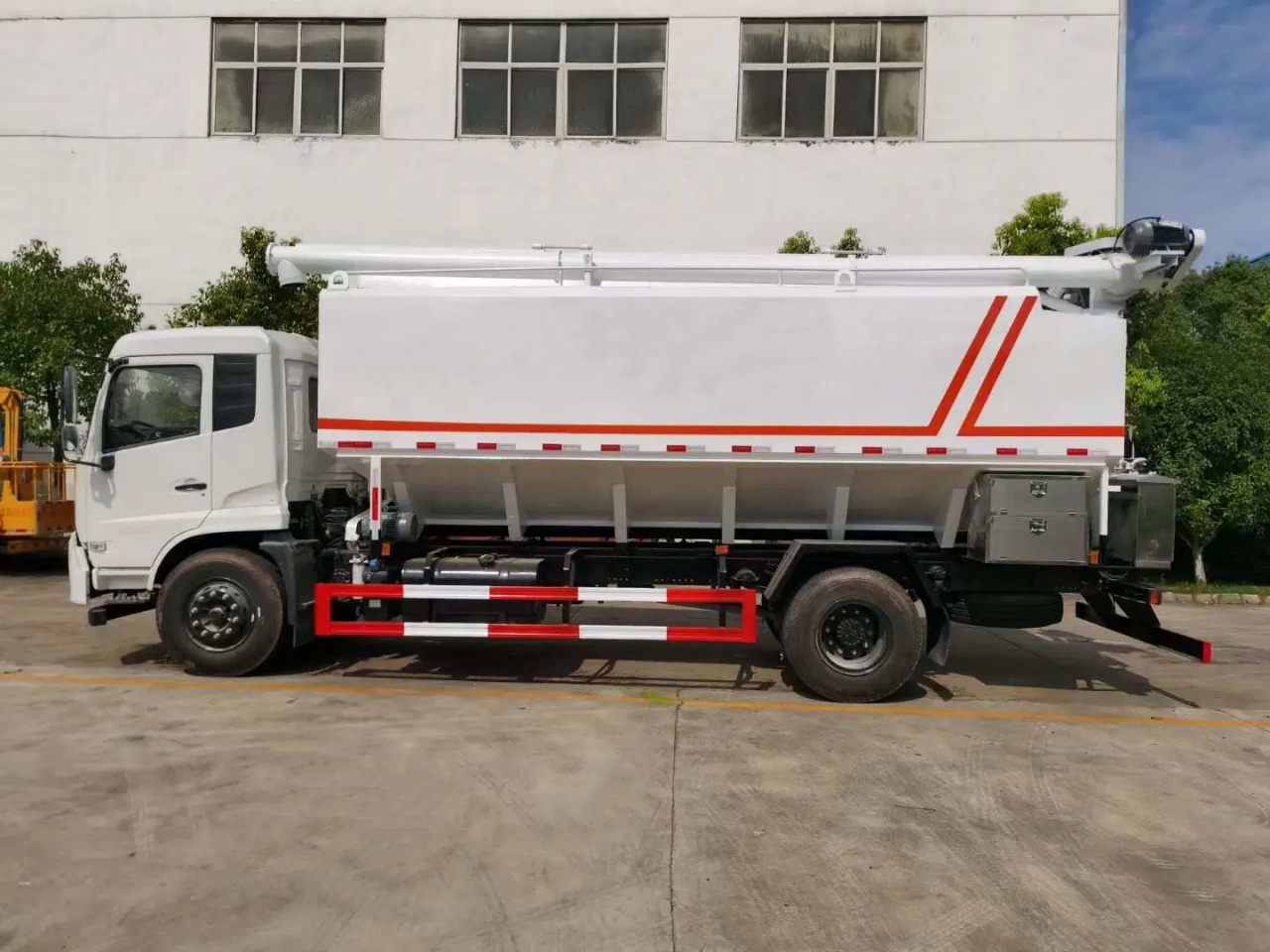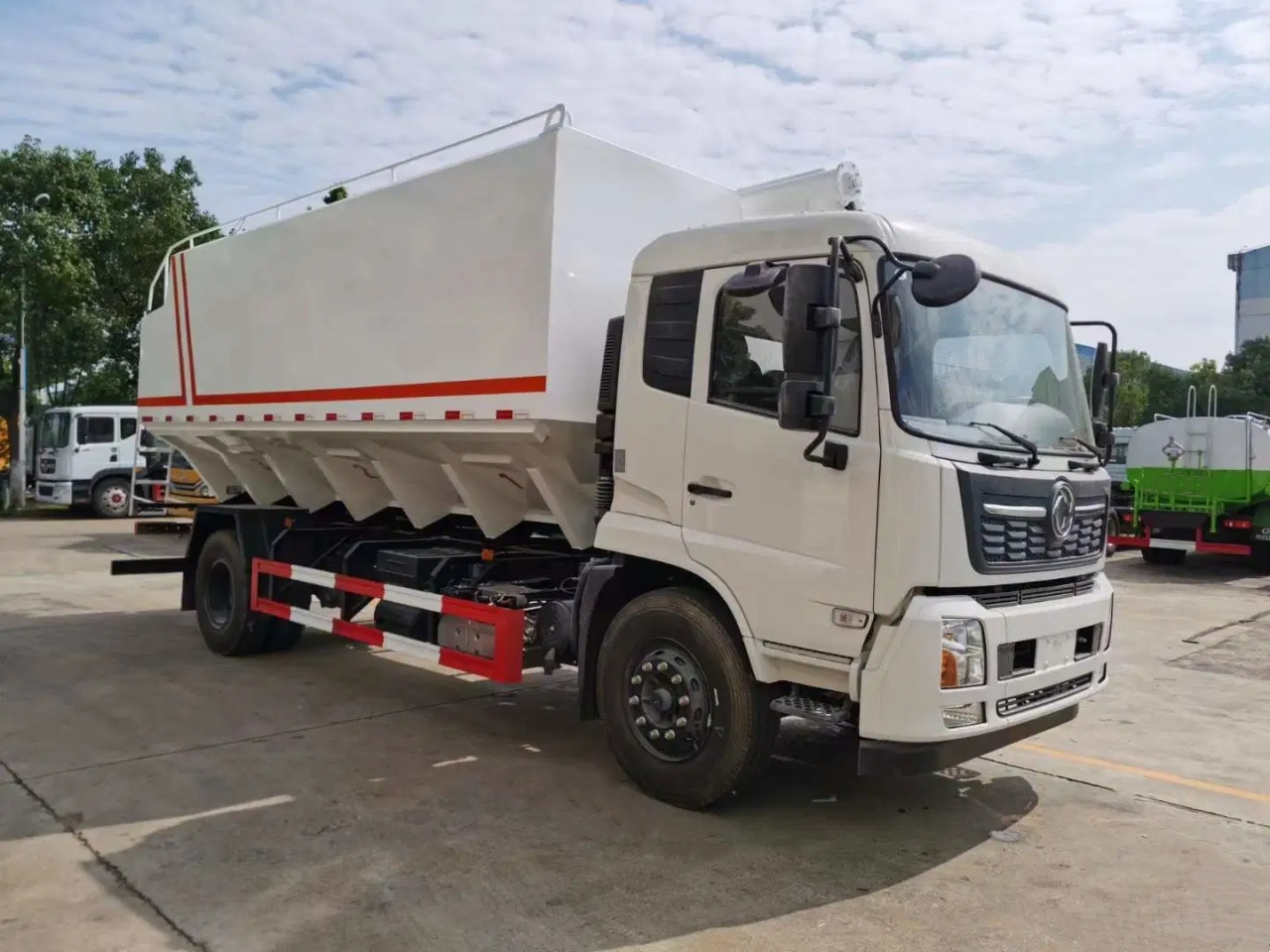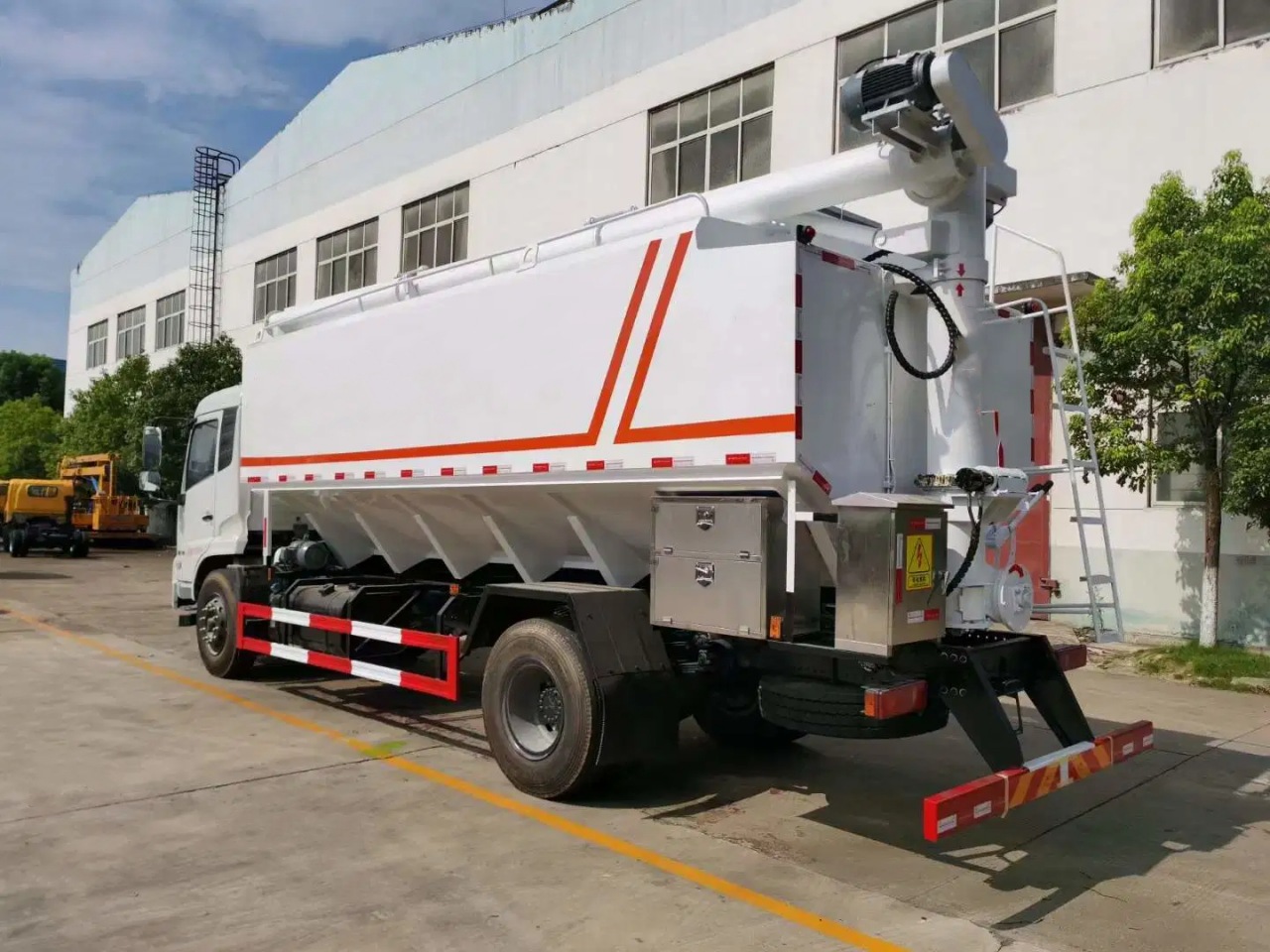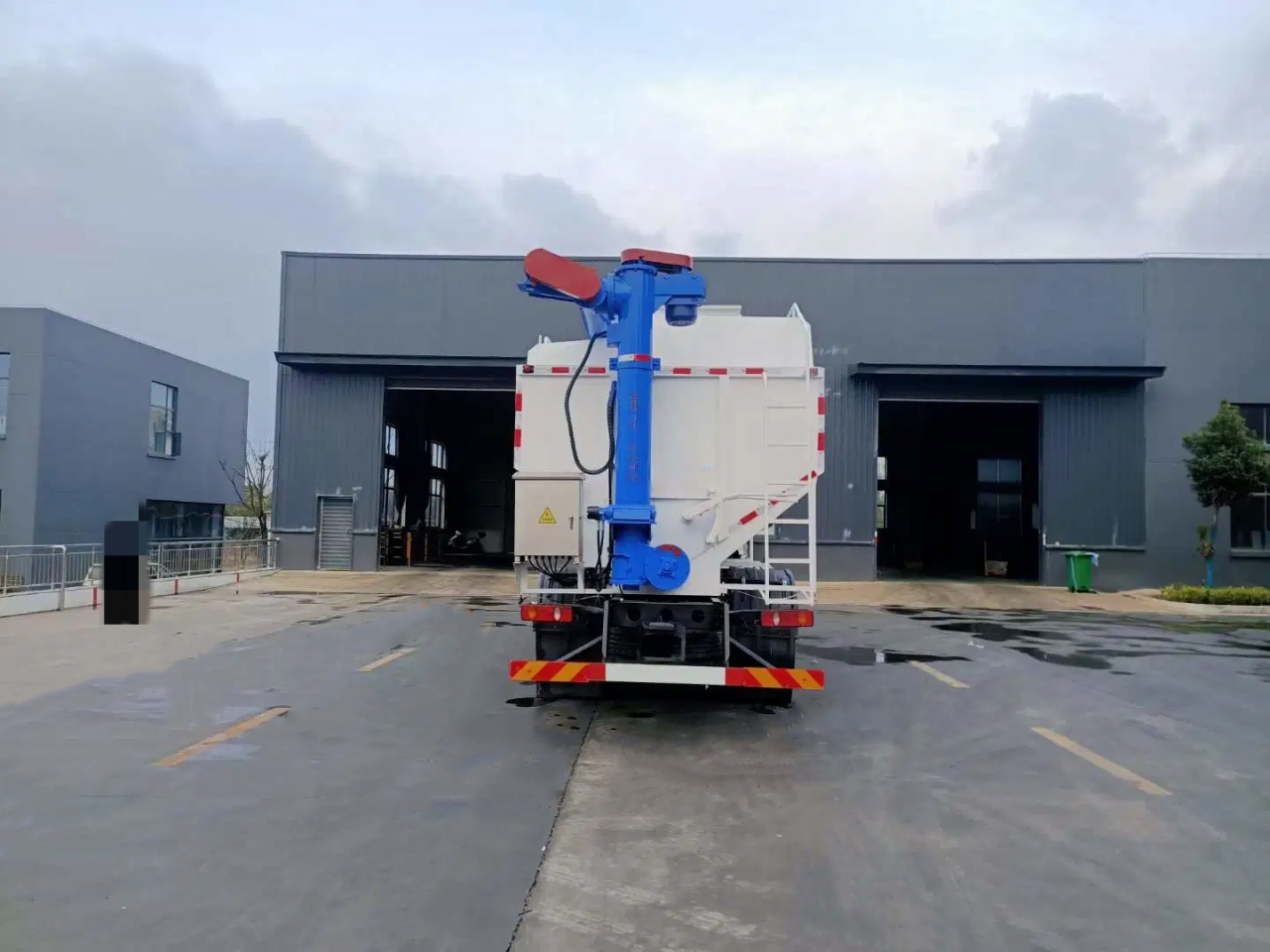Introduction
A feed truck is a specialized vehicle designed to transport and distribute livestock feed efficiently on farms and feedlots. These trucks are essential in large-scale animal husbandry, ensuring that livestock receive balanced nutrition in a timely and organized manner. By automating feed distribution, feed trucks help reduce labor costs, improve feed accuracy, and optimize animal growth and production.
Purpose and Functionality
Feed trucks serve the primary function of delivering and dispersing feed to cattle, poultry, pigs, and other livestock. They come equipped with various mechanisms to mix, transport, and distribute feed, ensuring that animals receive the right amount and composition of nutrients. The automation of this process improves efficiency and reduces the risk of human error in feeding schedules.

Types of Feed Trucks
Feed trucks vary based on their application, capacity, and the type of feed they handle. The most common types include:
- TMR (Total Mixed Ration) Feed Trucks – These trucks are designed to mix different feed ingredients to create a nutritionally balanced diet for livestock. They often include augers or mixing blades to blend feed effectively before dispensing it.
- Bulk Feed Trucks – These are used to transport large volumes of feed from production facilities to farms or storage bins. They feature compartments to keep different types of feed separate and maintain freshness.
- Self-Propelled Feed Trucks – These models are highly maneuverable and are commonly used in feedlots where space is limited. They integrate both mixing and dispensing systems in one compact unit.
- Pneumatic Feed Trucks – These trucks use air pressure to move feed through hoses and into storage bins or directly into feeding areas. They are especially useful for transporting powdered or pelletized feed.
Key Components of a Feed Truck
Feed trucks are built with specialized components that enable them to transport and dispense feed efficiently. Some key components include:
1. Mixing System
Many feed trucks, particularly TMR models, are equipped with augers, paddles, or vertical or horizontal mixing blades to ensure even distribution of nutrients in the feed mixture. This helps prevent nutritional imbalances in livestock diets.
2. Feed Bins and Compartments
Feed trucks have bins or compartments to hold various feed ingredients or pre-mixed rations. These bins are often made from stainless steel or aluminum to prevent rust and contamination.
3. Discharge Mechanism
Different feed trucks utilize various discharge methods, including augers, conveyors, gravity-fed chutes, or pneumatic blowers. The discharge mechanism is crucial for delivering feed precisely where it is needed.
4. Control Systems
Modern feed trucks are equipped with advanced electronic control systems, allowing operators to monitor and adjust feed mixing, weighing, and dispensing processes. These systems often include touchscreen interfaces and remote operation capabilities.
5. Chassis and Drive System
The chassis and drive system vary depending on the size and terrain of the operation. Heavy-duty trucks are used for large-scale feeding operations, while smaller, self-propelled units may be used for more confined spaces.

Benefits of Using Feed Trucks
The use of feed trucks provides several advantages in livestock management, including:
1. Efficiency and Labor Reduction
Feed trucks automate the feeding process, reducing the need for manual labor and increasing overall efficiency in feed distribution.
2. Accurate Feed Distribution
Modern feed trucks are equipped with precision weighing and mixing systems, ensuring that animals receive the correct amount of nutrients.
3. Reduced Feed Waste
By accurately measuring and distributing feed, these trucks help minimize waste, leading to cost savings for farmers.
4. Improved Animal Health and Growth
Properly mixed and distributed feed leads to better digestion and absorption of nutrients, resulting in healthier and more productive livestock.
5. Flexibility and Adaptability
Feed trucks can handle various types of feed, including hay, silage, grains, and supplements, making them adaptable to different livestock operations.
Maintenance and Upkeep
To ensure longevity and optimal performance, feed trucks require regular maintenance. Key maintenance tasks include:
- Checking and Lubricating Moving Parts – Augers, conveyors, and other moving parts should be inspected and lubricated to prevent wear and tear.
- Cleaning Feed Bins and Components – Regular cleaning prevents contamination and mold growth in feed compartments.
- Inspecting Hydraulic and Electrical Systems – These systems should be checked for leaks or malfunctions to maintain efficiency.
- Tire and Chassis Maintenance – Ensuring proper tire pressure and chassis integrity is crucial for safe operation.

Technological Advancements in Feed Trucks
With advancements in agricultural technology, feed trucks are becoming more sophisticated. Some modern innovations include:
- Automated Weighing and Dispensing – Ensuring precise feeding schedules and amounts.
- GPS and Telematics – Allowing operators to track feed deliveries and monitor vehicle performance remotely.
- IoT Integration – Smart sensors that provide real-time data on feed levels, weight distribution, and operational efficiency.
Conclusion
A feed truck is an essential asset in livestock farming, streamlining the feeding process, improving efficiency, and ensuring optimal animal nutrition. By choosing the right type of feed truck and maintaining it properly, farmers can significantly enhance their operations, reduce costs, and improve overall productivity. As technology continues to evolve, feed trucks will become even more advanced, further transforming livestock management and feed distribution practices.


